B-26B Marauder
WWII American Bomber
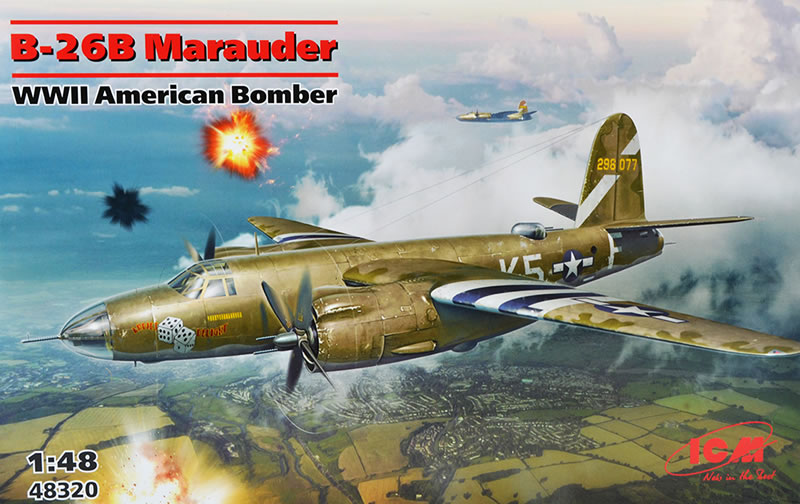
ICM, 1/48 scale
S
u m m a r y |
| Catalogue Number and Price: |
ICM Kit No. 48320 - B-26B Marauder WWII American Bomber
GBP£68.22 EU Price (£56.85 Export) plus shipping available online from Hannants
|
| Scale: |
1/48 |
| Contents and Media: |
344 grey injected moulded parts, 24 clear parts, decals and instructions. |
| Review Type: |
FirstLook. |
| Advantages: |
Crisp yet subtle moulding with good detail. Interesting choice of schemes. |
| Disadvantages: |
No seat belts or masks for the asking price. |
| Conclusion: |
A long-awaited release of the B-26 Maruader that will replace the very old Monogram one. Very nice detail and a variety of schemes. |
Reviewed by David Couche

The Martin B-26 Marauder is an American twin-engined medium bomber that saw extensive service during World War II. The B-26 was built at two locations: Baltimore, Maryland, and Omaha, Nebraska, by the Glenn L. Martin Company.
First used in the Pacific Theatre of World War II in early 1942, it was also used in the Mediterranean Theatre and in Western Europe.
In March 1939, the United States Army Air Corps (USAAC) issued Circular Proposal 39-640, a specification for a twin-engined medium bomber with a maximum speed of 350 mph (560 km/h), a range of 3,000 mi (4,800 km), and a bomb load of 2,000 lb (910 kg). On 5 July 1939, the Glenn L. Martin Company submitted its design, produced by a team led by Peyton M. Magruder, to meet the requirement, the Martin Model 179. Martin's design was evaluated as superior to the other proposals and was awarded a contract for 201 aircraft, to be designated B-26. The B-26 went from paper concept to an operational bomber in approximately two years. Additional orders for a further 930 B-26s followed in September 1940, still prior to the first flight of the type.
The B-26 was a shoulder-winged monoplane of all-metal construction, fitted with a tricycle landing gear. It had a streamlined, circular-section fuselage housing the crew, consisting of a bombardier in the nose, armed with a .30 in (7.62 mm) machine gun, a pilot and co-pilot sitting side by side, with positions for the radio operator and navigator behind the pilots. A gunner manned a dorsal turret armed with two .50 in (12.7 mm) machine guns (the first powered dorsal turret to be fitted to a U.S. bomber), and an additional .30 in (7.62 mm) machine gun was fitted in the tail.

Two bomb bays were fitted mid-fuselage, capable of carrying 5,800 lb (2,600 kg) of bombs, although in practice such a bomb load reduced range too much, and the aft bomb bay was usually fitted with additional fuel tanks instead of bombs. The aircraft was powered by two Pratt & Whitney R-2800 Double Wasp radial engines in nacelles slung under the wing, driving four-bladed propellers.

The engines were manufactured at the Ford Dearborn Engine plant in Dearborn, Michigan. The wings were of low aspect ratio and relatively small in area
for an aircraft of its weight, giving the required high performance, but also resulting in a wing loading of 53 lb/sq ft (260 kg/m2) for the initial versions, which at the time was the highest of any aircraft accepted for service by the USAAC, until the introduction of the Boeing B-29 Superfortress, with the then-astonishing wing loading of 69.12 lb/sq ft (337.5 kg/m2) (although both would be considered lightly loaded by the standard of combat aircraft of the next decade).
After entering service with the United States Army aviation units, the aircraft quickly received the reputation of a "widowmaker" due to the early models' high accident rate during takeoffs and landings. This was because the Marauder had to be flown at precise airspeeds, particularly on final runway approach or when one engine was out. The unusually high 150 mph (241 km/h) speed on short final runway approach was intimidating to many pilots who were used to much slower approach speeds, and when they slowed to speeds below those stipulated in the manual, the aircraft would often stall and crash.
The B-26 became a safer aircraft once crews were retrained, and after aerodynamics modifications (an increase of wingspan and wing angle-of-incidence to give better take-off performance, and a larger vertical stabilizer and rudder). The Marauder ended World War II with the lowest loss rate of any U.S. Army Air Forces bomber.
In total, 5,288 were produced between February 1941 and March 1945; 522 of these were flown by the Royal Air Force and the South African Air Force. By the time the United States Air Force was created as an independent military service separate from the United States Army in 1947, all Martin B-26s had been retired from U.S. service. After the Marauder was retired, the unrelated Douglas A-26 Invader then assumed the "B-26" designation, which led to confusion between the two aircraft.
By the end of World War II, it had flown more than 110,000 sorties, dropped 150,000 tons (136,078 tonnes) of bombs and had been used in combat by British, Free French and South African forces in addition to US units. In 1945, when B-26 production was halted, 5,288 had been built.
*Text courtesy of Wikipedia
After waiting so long for the promised B-26B Marauder from ICM, it was much to my surprise when my local plastic dealer, Craig at Aeroworks in Adelaide, Australia, emailed me that it had arrived. I had seen no fanfare on any of the social media modelling groups of it being released which is very unusual. Also, Australia is often well down the list for receiving these new kits, so we see and read about those who have them and we are left to dream of ever getting one. I did notice that many of the overseas retailers had yet to receive theirs as well. For a change we have been lucky.
You get a large box with this kit, with as a cover, which is over a sturdy white box containing a large amount of grey injection moulded plastic. The contents include, 8 grey injected moulded sprues with some 344 parts on them. There is one clear sprue containing 24 very clear parts, decals and an instruction booklet. Panel lines are recessed and raised detail in places required, such as the cockpit and wheel bays. The panel lines are subtle and not overly busy. There is no rivet detail which simplifies the look, but there is more than enough detail in panel openings etc over the surfaces. The detail for the internals is very reminiscent of the great interiors from Monogram many years ago. All sprues are cleanly moulded with no flash evident and sprue gates to the parts appear to have been created to minimise their effect on the parts.
Sprue A

This sprue is the grey plastic sprue and has only 2 parts on it. These are the 2 fuselage halves.

There is a good deal of detail on the inner surfaces around the cockpit, bomb bay and side gunner stations.

Sprue B
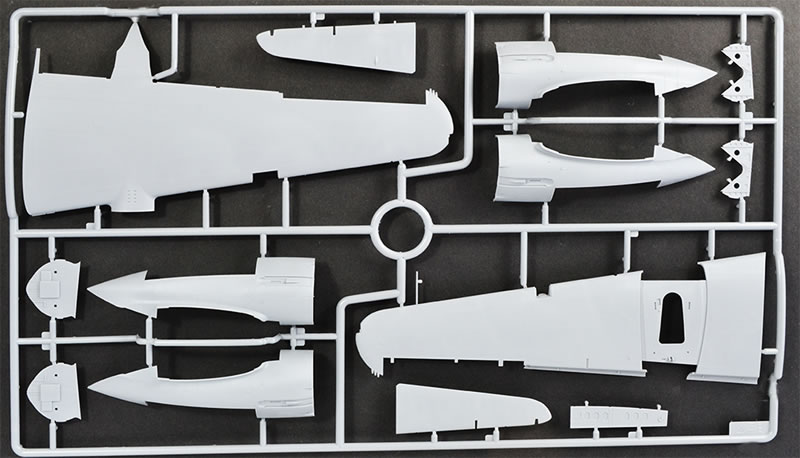
Sprue B contains 13 parts which include the port upper and lower wings, both complete engine nacelles, inner frames, and outside halves, as well as parts for the tail planes.

Sprue C
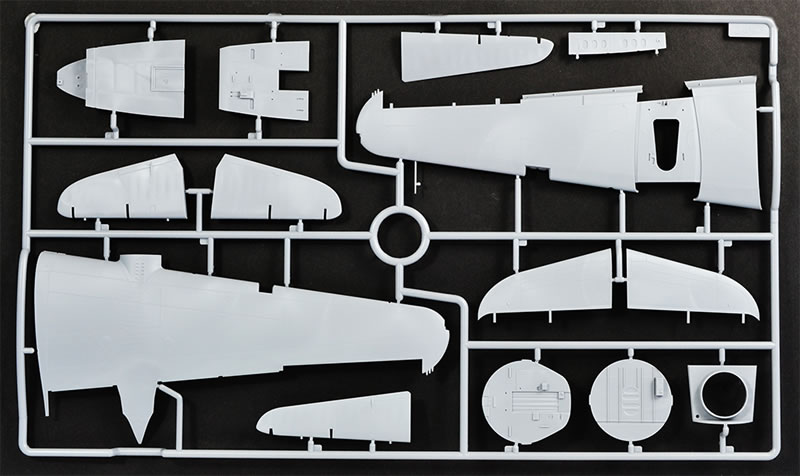
Here on Sprue C we have 14 parts, including the starboard upper and lower wings.
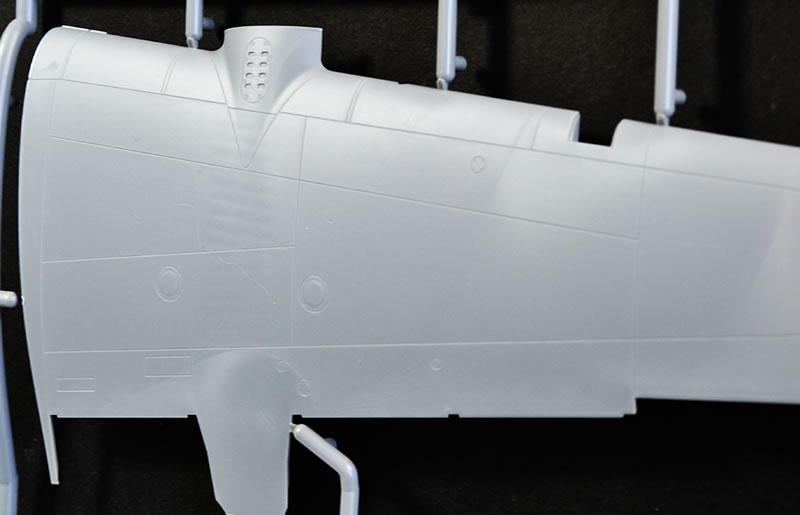
This also has the cockpit floor, nose wheel bay structure as well as the cockpit and gunners wall sections.
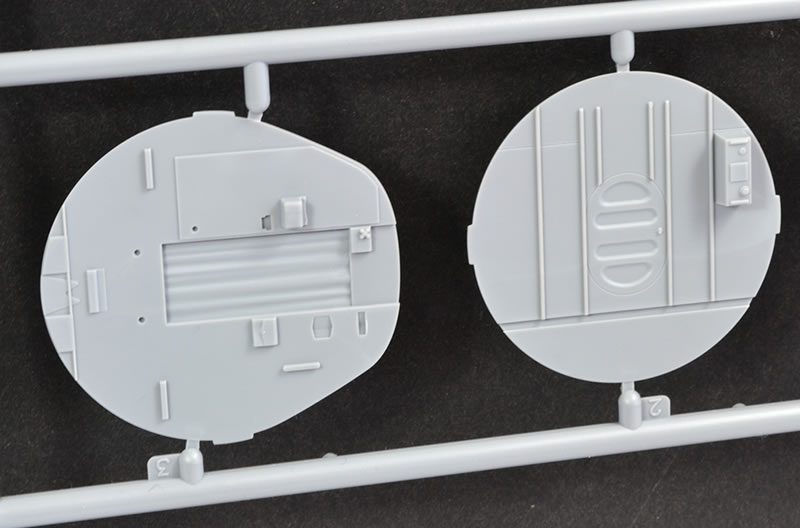
There is also the remaining parts of the tail planes and tail structure.
Sprue D
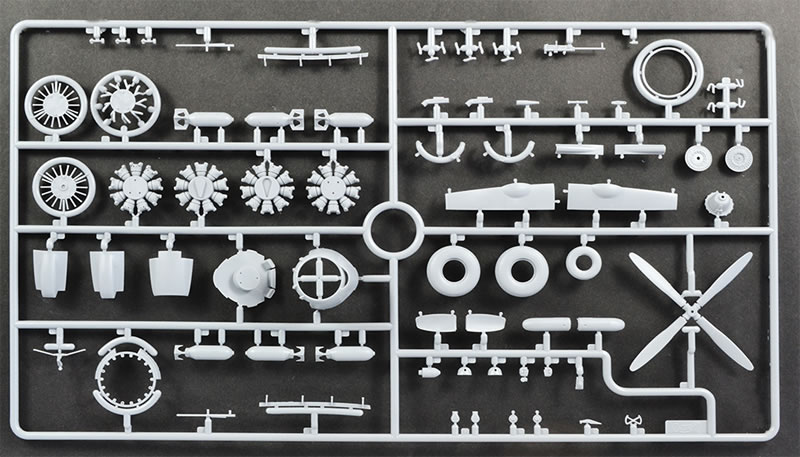
An interesting sprue with 77 parts on it with there being 2 of these sprues as duplicates. Of main interest are the parts for the complete multi-piece engine. The engine comprises of 27 parts for each one and is very detailed. The front section of the engine nacelles is included here and that is made up of 9 parts.
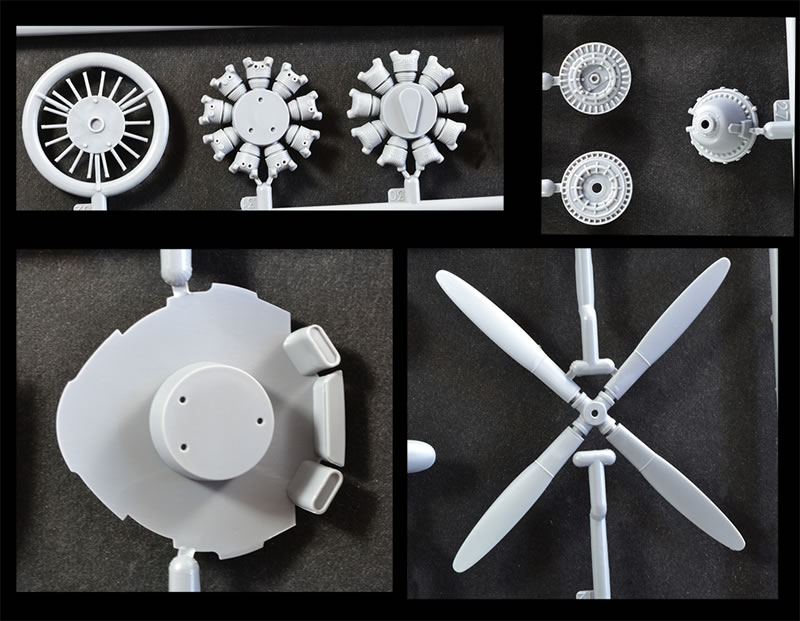
We also have the prop and wheels, which are multi-piece external parts with separate wheel hubs, which will make painting easier. There are a number of minor parts on here including bombs, 3 complete bombs on each sprue tree.
While on this sprue, the engine build is very detailed, and dare I say, reminds me very much of the original Eduard Fw 190A-8 build. ICM, you’ve given us all this wonderful detail, yet there’s not option to have the engine panels open.
Sprue E
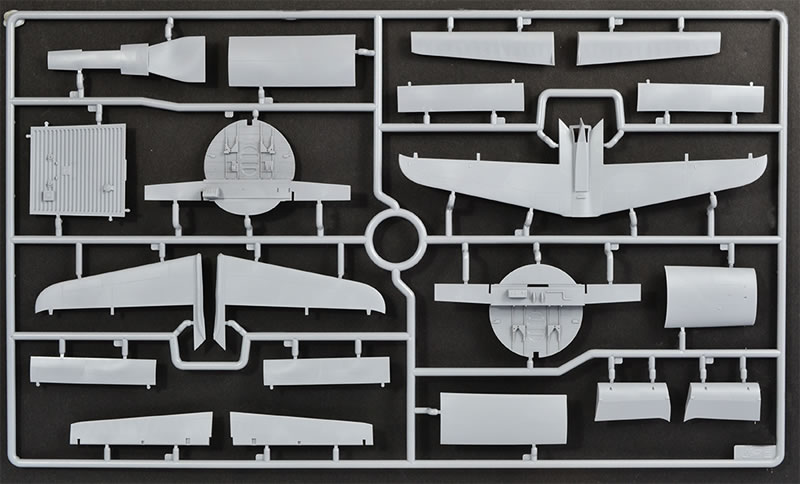
We move onto sprue E, having 20 parts including the tail sections, the bomb bay walls and roof, parts for both ailerons, side gunners’ floor and the bomb bay doors.

All these parts are fairly substantial and there is plenty of detail on most of these.
Sprue F
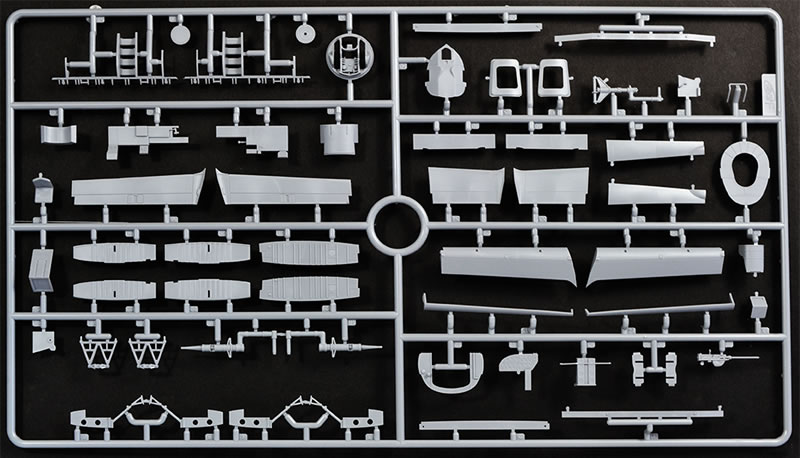
Sprue F has 57 parts, big and small on the sprue tree. You get parts to create the wheel bays in the engine nacelles and the doors for the nose wheel. We have parts for the ailerons, flaps and all the main undercarriage legs. Continuing on we find the parts for the construction of the upper turret, and also the wall in the navigator’s section and the tail gunner’s wall.
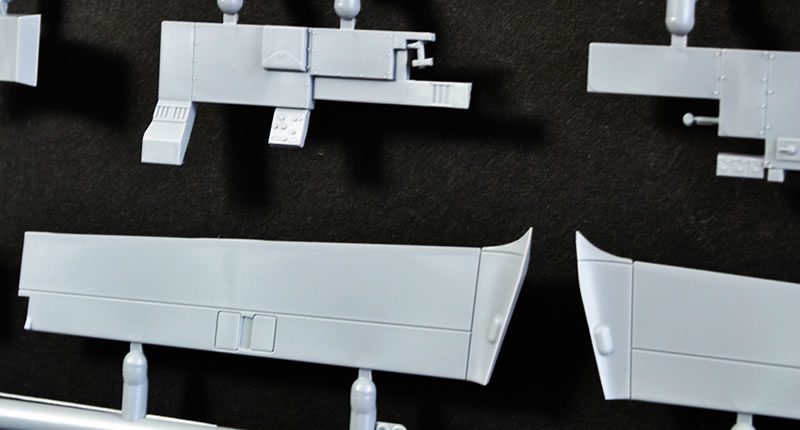
Interestingly, there are 2 plates that slide between the wing spars on the outside of the fuselage but create the appearance of the fuselage framing that you can see through the bomb bay. Very clever ICM. Sprue F also provides us with much of the detail in the cockpit, instrument panels, side wall panels and so on.
Sprue G
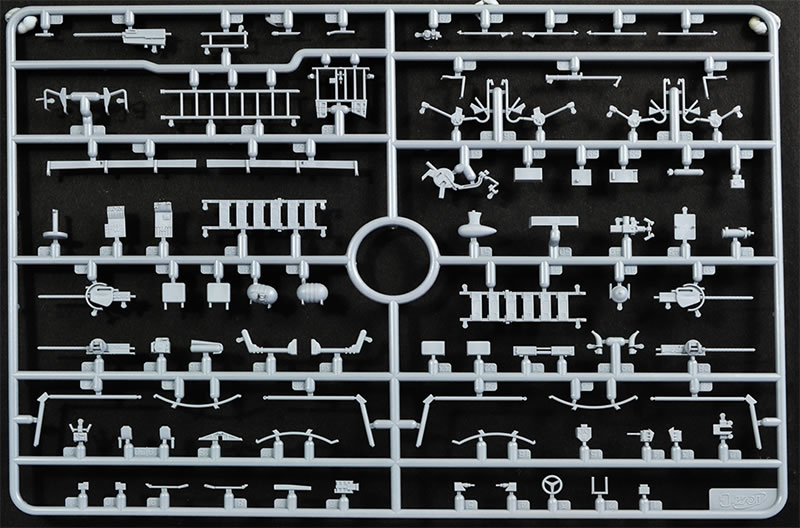
This is the final of the grey moulded sprue trees with 84 parts on it. There are 2 not used for this build.
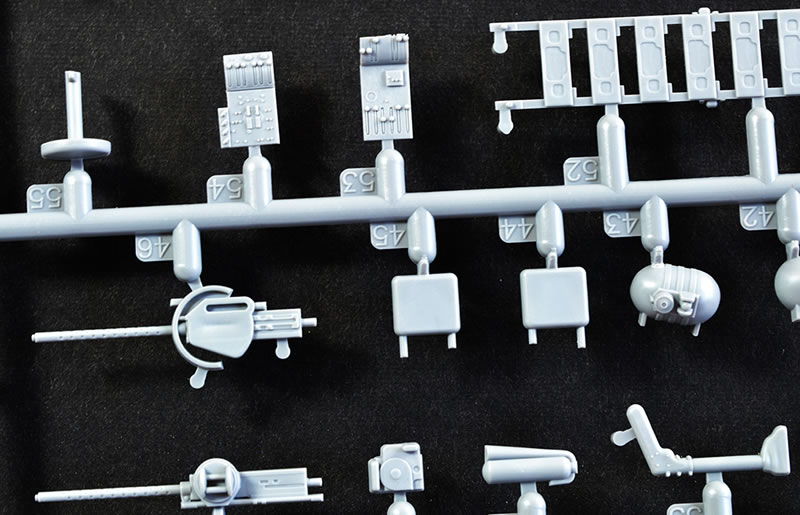
This has a myriad of small parts that are used all over the aircraft, including more instrumentation for the cockpit, machine guns, finer parts for wheel wells and the bomb bay. Lots of fun to be had here inserting many of these small parts.
Sprue H
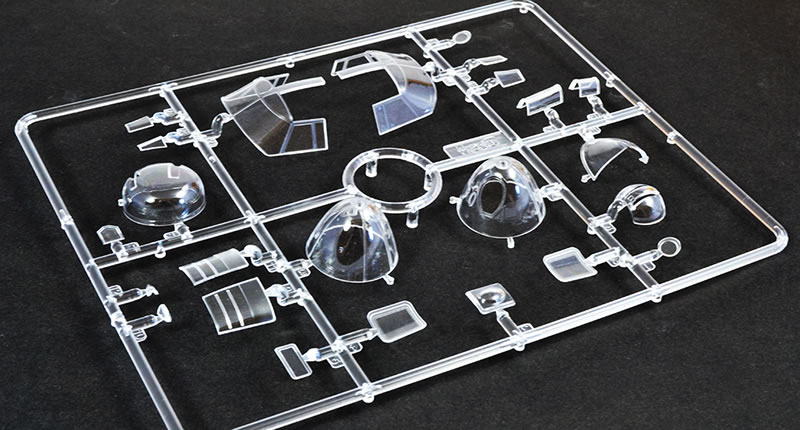
This is the clear sprue with 24 crystal clear parts of which, 2 are not for use with this variant. You get a 3-part canopy, the windscreen section and 2 upper windows to be added separately.

There is a large clear dome type nose, and a crisply moulded upper gun turret.
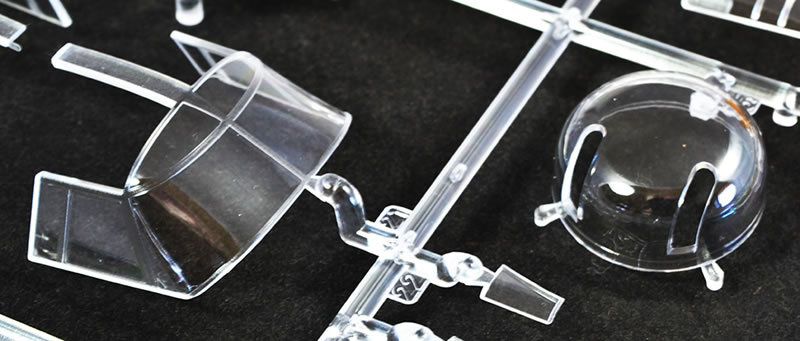
There are plenty of smaller windows to fit around the fuselage as well as separate wing tip lights.
Instructions and Decals
The instructions for the kit are fairly clear and well laid out construction sheets. They do have detailed coloured painting and decaling instructions, if not a bit small compared to some other manufacturers considering there is a lot of space not used on the page. Colour call outs are for ICM colours only. You will need to convert to your favourite paint brand/type.

The decals appear to be in perfect register giving the options for 3 different aircraft flown by the Army Air Forces with 2 camouflaged aircraft and a natural metal one. Included are very basic data stencils.
I have included a scan of the aircraft profiles and some photos of the actual aircraft, they are;
-
Martin B-26B-55-MA, 42-96077, “Ladies Delight”, 584th Bomb Squadron, 394th Bomb Group, RAF Boreham, England, summer 1944
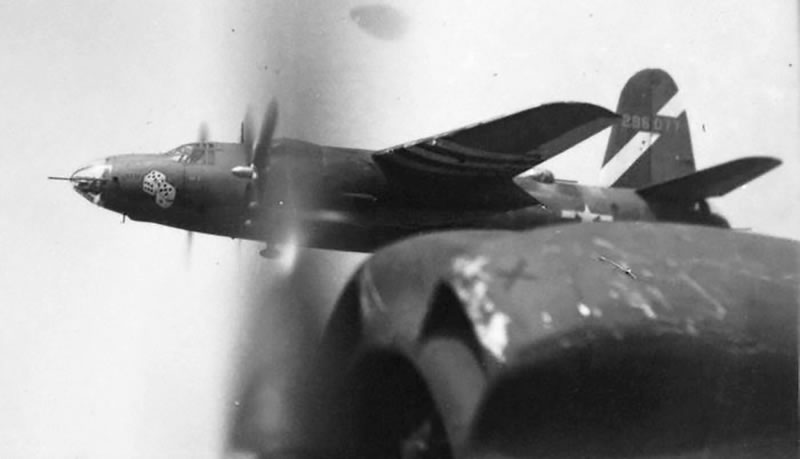
-
Martin B-26B-55-MA, 42-96214, “Coral Princess III”, 494th Bomb Squadron, 344th Bomb Group, Pontoise, France, Autumn 1944 (No photos available – only a nose profile)
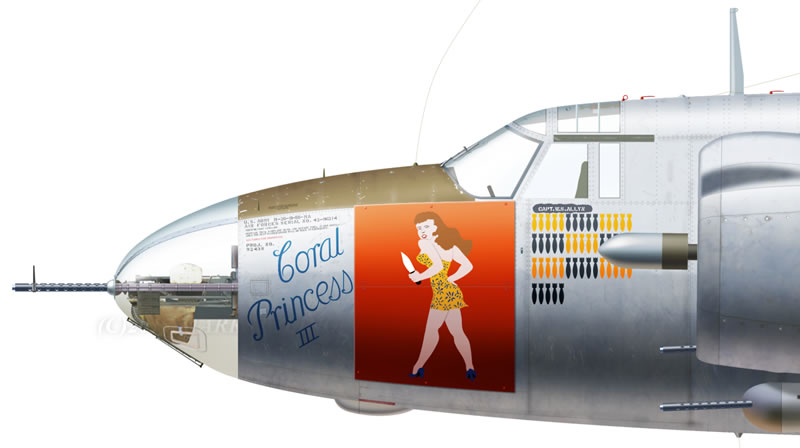
-
Martin B-26B-55-MA, 42-96165, “The Big Hairy Bird”, 599th Bomb Squadron, 397th Bomb Group, Peronne, France, December 1944
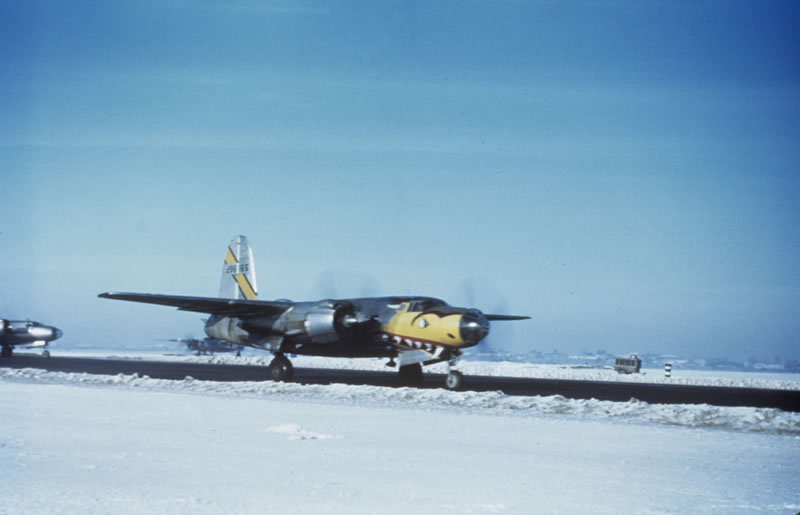
This is a very nice, well detailed kit that gives you a good range of schemes used by the US forces in WWII. It looks like it will build into a nice model at the end, hopefully without the challenges the earlier and very much older kits gave us.
It is a fairly expensive kit but you do get a lot of plastic for your money but honestly, so many similarly priced kits provide etch belts and masks. Maybe I need to be more forgiving of ICM as they continue to produce so many new kits whilst being in a war zone which deserves much praise. I look forward to building this kit to go with my A-26 Invader version.
Recommended.
Thanks to my retirement fund for the sample
Review Text Copyright © 2024 by David Couche
Page Created 9 May, 2024
Last updated
9 May, 2024
Back to HyperScale Main Page
Back to Reviews Page |
